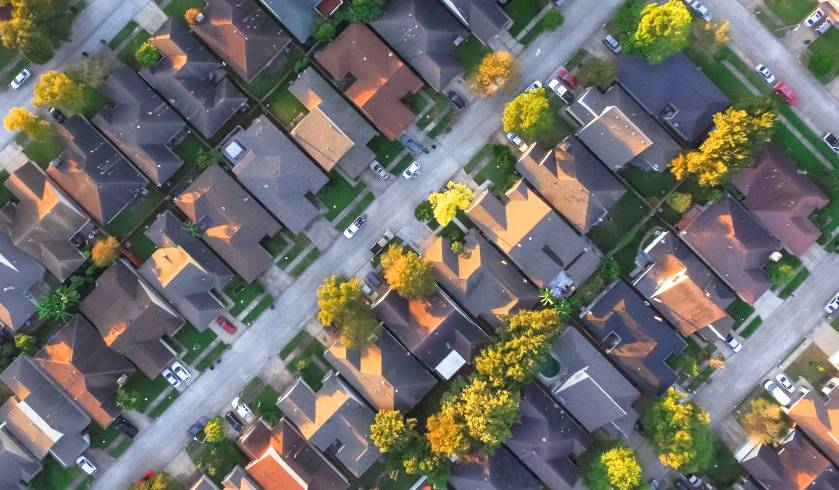Housing key to COVID-19 economic recovery
Australia’s post-pandemic economic recovery has been considerably aided by the record-breaking performance of the property market, reinforced by housing credit spike and revved up sales volumes.

The latest CoreLogic Economic & Property Review delved into key housing market trends through November 2021, which offered a summary of the industry’s impressive $9.4 trillion contribution to the national economy. It also included data about the housing and economic performance in each state and territory, as well as an overview of the housing finance environment.
To continue reading the rest of this article, please log in.
Create free account to get unlimited news articles and more!
In the year to November 2021, research results revealed that the national housing values increased by 22.2 per cent, with regional Australia experiencing a 25.2 per cent increase and combined capital city housing values increasing by 21.3 per cent.
During the same time period, it was also reported that an estimated 614,635 housing sales occurred state-wide, representing the largest annual sales volume since December 2003.
Eliza Owen, CoreLogic’s head of research who authored the report, stated that strong housing market activity had been underpinned by a combination of factors, such as low loan rates and relatively low quantities of available stock.
“Housing-related government support such as the First Home Loan Deposit and HomeBuilder schemes and non-housing fiscal stimulus, such as JobKeeper, helped many Australians service housing costs such as rents and mortgage repayments,” Ms Owen explained.
Weighing in on the impact of these government support for buyers, she added: “Alongside home loan repayment deferrals, these household support measures stabilised the supply-side of housing through 2020 by preventing distressed sales, and these repayment deferrals were re-introduced amid lockdowns in 2021.”
On top of this, Ms Owen has reported the growth of household savings rate to 23.6 per cent through June 2020, up from a decade average of 6.9 per cent, in spite of onerous lockdowns and limited short-term consumption spending.
“It is probable that lower mortgage rates, and an observed economic and housing market recovery from the end of 2020, contributed to buoyant housing demand, particularly in those cities impacted by lockdowns in 2021,” Ms Owen opined.
She also injected another layer to her observation: “However, the nature of restrictions also affected housing dynamics, with sales volumes falling far more dramatically in areas where physical inspections of property were prohibited.”
Her statement refers to data pertaining to rent prices, which have also seen a significant increase at the national level, rising 9.4 per cent in the year to November 2021, the greatest rate of annual growth since January 2008.
Highlights by state and territory
NSW
Since October 2020, the NSW housing market has been on the rise, with state-wide house values climbing 26.5 per cent in the year to November 2021. This has been reported as the second-highest growth among states and territories, right behind Tasmania, which experienced a 28.6 per cent rise for the period.
Premium lifestyle markets with the highest annual growth rates are the Southern Highlands and Shoalhaven at 36.6 per cent, Sydney’s Northern Beaches at 36.4 per cent, the Central Coast at 34.1 per cent, and Sydney’s Baulkham Hills and Hawkesbury region at 33.2 per cent.
Victoria
The most significant disparity in housing market performance has been observed between Victoria’s regional and urban locations, according to the report. Greater Melbourne experienced the second-weakest result among the capital cities, where housing prices climbed 16.3 per cent in the year to November, while regional Victorian property values increased 24 per cent.
The city’s migration levels, economic production, and housing demand are said to have all been influenced by Australia’s foreign migration limitations, as well as Melbourne’s prolonged lockdowns in 2020 and 2021.
Queensland
Mixed outcomes in Queensland’s property market helped the industry experience phenomenal growth in the past year. Brisbane’s quarterly growth continues to rise, while the south-east of the state experienced the fastest growth rate in their lifestyle markets.
Ms Owen attributed this trend to a combination of reasons such as “historically low listings and a median house value of $757,194, which is -23.3 per cent less than Melbourne’s median house value and -44.3 per cent less than Sydney’s median house value”.
Queensland also had the highest net interstate migration number in Australia in the year to March 2021, with interstate migration up 28.2 per cent.
South Australia
Adelaide ranked second in quarterly price growth among the capital cities and recorded the highest quarterly growth rate in the last 20 years, with an increase of 6.5 per cent in November.
Ms Owen pointed to consistently limited house supply and relative affordability as the possible contributors to the Adelaide housing market’s consistent and high quarterly growth. Adelaide is the third most affordable city, behind Perth and Darwin, with a median housing value of $558,179.
Western Australia
Home prices in Western Australia have experienced an upward trend since November 2019 and are now 22.1 per cent higher than when they reached their lowest point in October 2019. However, Ms Owen highlighted that it’s “still -3.4 per cent below the record high of June 2014”.
The rebound in Western Australia home values has been stronger in Perth, where prices are -2.4 per cent lower than the June 2014 peak, but values in regional Western Australia are still -20.7 per cent below than the January 2008 high. Property prices have risen as a result of successive cash rate cuts, more favourable internal migration trends, and an increase in employment, particularly in the mining sector.
Tasmania
Tasmania has been reported as a standout as its property market consistently outperformed other states and territories through November. House prices climbed about 30 per cent in the previous year, bringing the state’s five-year annualised growth rate to 11.8 per cent.
In the last five years, Hobart’s median house price has risen from the lowest of all capital cities, at just $359,088, to the fourth-highest at $676,595.
Fueled by a strong economic and demographic position pre-pandemic, median rent prices have climbed from $345 per week to $495 per week over the same time period.
Northern Territory
The Northern Territory experienced a 15.6 per cent rise in home prices in the year to November, which CoreLogic’s report attributed to “low interest rates, first home buyer incentives, government assistance packages through COVID-19 and improving economic conditions”.
However, Darwin’s latest home value index results show its home prices are still -15.3 per cent below their peak in May 2014 despite an increase of 25.9 per cent since bottoming out in March 2020.
ACT
The housing market in the ACT has risen steadily during 2021, with the median house value in the nation’s capital falling $245 short of $1 million in November after increasing 27.2 per cent in the previous year. In October 2021, the ACT surpassed Melbourne’s median house value, placing it second only to Sydney.
Conditions are favourable for home buyers in the territory because, despite the continued development, housing affordability in Canberra has remained relatively stable, thanks to higher-than-average earnings and low unemployment rates.
Looking ahead
Aligned with property market forecasts, Ms Owen has acknowledged the slowing down of growth rates, an indicator that the sharp growth seen in 2021 may not have a repeat in 2022 due to differences in dynamics between states and territories.
The pace of the housing market in Sydney and Melbourne is slowing, owing to a large number of listings currently on the market and significant affordability limitations, said CoreLogic’s head of research.
“Across Melbourne, demand appears to be shifting to more affordable areas of the city, with lower-value dwelling markets seeing a pick-up in quarterly growth rates. Similarly, value gains are accelerating across regional NSW, while affordability weighs on dwelling demand across Sydney,” Ms Owen observed.
Furthermore, value growth rates in Brisbane and Adelaide have reached their record-breaking levels in over a decade and are still continuing to climb. A similar trend has been reported in the ACT, with the median house price approaching $1 million, which is fuelling investor participation in the area while pushing buyers to look at units instead.
Taking off from this trend, Ms Owen raised the red flag.
“Listings levels are normalising across Sydney and Melbourne, and affordability constraints are worsening across most housing markets,” she said.
She highlighted that the high value rise and above-average rates of property turnover seen in 2021 are unsustainable, especially given projected headwinds such as recent changes in mortgage lending rules and hints of interest rate hikes, both of which are expected to reduce housing demand.
“As a result, it is expected that 2022 will see far milder rates of appreciation in Australian dwelling values,” Ms Owen concluded.

